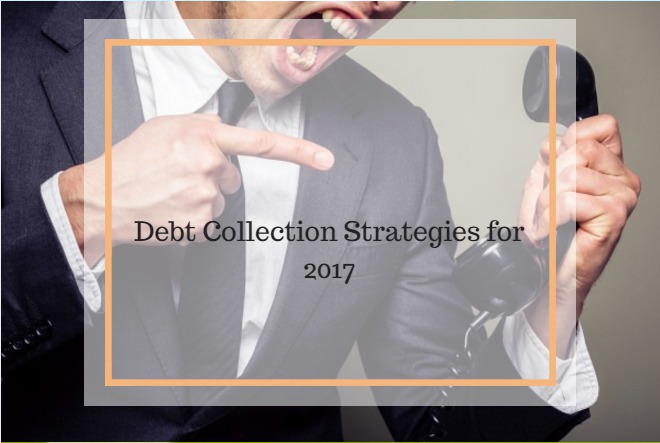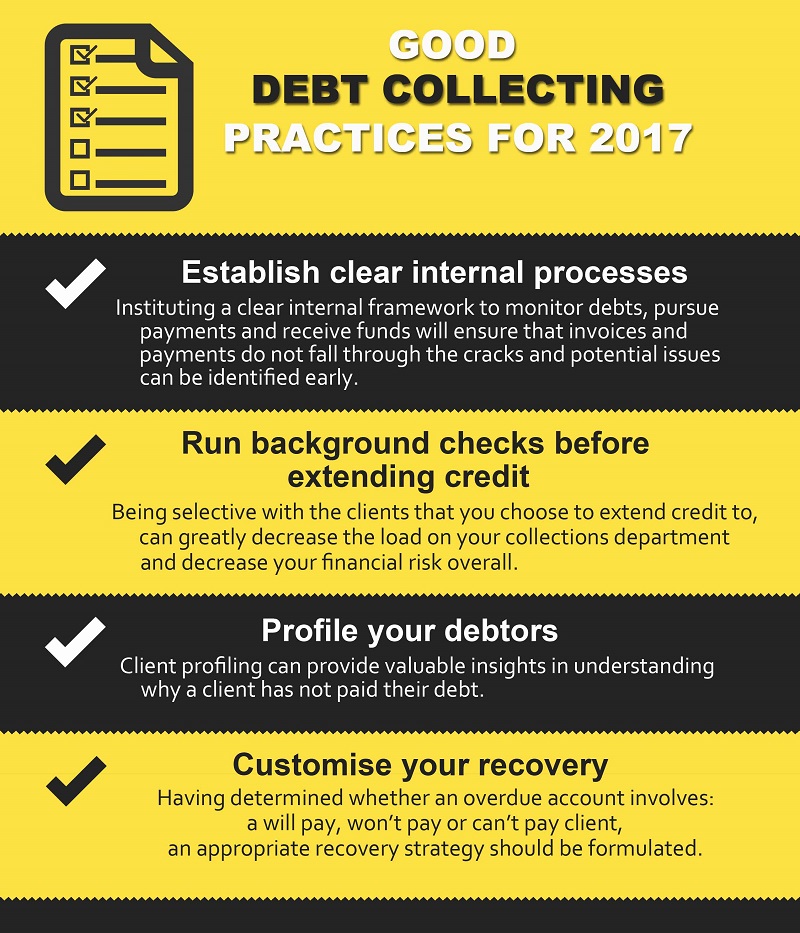
The benefits of instituting good debt collection practices are well known to smart business people, but like any worthwhile cause, debt collection has its challenges. Soliciting on-time payments from clients can be a delicate and highly sensitive process which must be handled strategically. But what strategies really work?
The most effective debt collection strategies focus on “reforming” debtors, so that business relationships can be preserved and future profits can be generated. This requires a business to be proactive and efficient at monitoring and managing debts in-house and knowing when to outsource debts that require escalation.
Read Also: Complimentary Legal Service and Successful Debt Collectors
Here are four key debt collection practices businesses can implement to improve collections, decrease aged debts and enhance their business realisation and profitability.

Establish clear internal processes
Instituting a clear internal framework to monitor debts, pursue payments and receive funds will ensure that invoices and payments do not fall through the cracks and potential issues can be identified early. In addition to the key debt management procedures such as credit checking, periodic reviews, client reminders and escalation protocols, a good system should incorporate data sharing on a debtor’s dealings with third party collection organisations (where available), to increase the information available to make decisions on credit management.
Run background checks before extending credit
A sale does not amount to profit until payment is received, and giving yourself the best chance of getting paid begins before the handshake. Being selective with the clients that you choose to extend credit to, can greatly decrease the load on your collections department and decrease your financial risk overall. Utilise a credit application for all clients so you can get to know their financial position and paying habits in order to set appropriate credit limits.
Read Also: Working With A Debt Collection Agency
Profile your debtors
In order to know how to most effectively collect your debt you must understand why a client has not paid it. Client profiling can provide valuable insights in this regard. Statistical modelling applications are included in many accounting packages which formulate a profile for each client, combining information such as payment behaviour, profitability and collection scores. This can be used to make an early assessment of why a debtor hasn’t paid their invoice on time.
Customise your recovery
Having determined whether an overdue account involves: a will pay, won’t pay or can’t pay client, an appropriate recovery strategy should be formulated.
- Clients who can pay have usually just misplaced or forgotten about your invoice so a simple reminder will often result in payment.
- Clients who can’t pay can be identified as those who are suffering financial hardship or cannot be located or contacted for billing. Appropriate measures may include arranging a payment plan, resting the debt or where necessary employing a skip tracer to locate the debtor so they can be invoiced.
- Clients who flatly refuse to pay are often best left to a professional debt collection agency, to recover on your behalf.
By utilising these practices, businesses can become more familiar with their debtors, not just their debts and develop ways to better manage their credit and collections. Understanding your clients will ultimately forge stronger commercial relationships and fortify your business.







